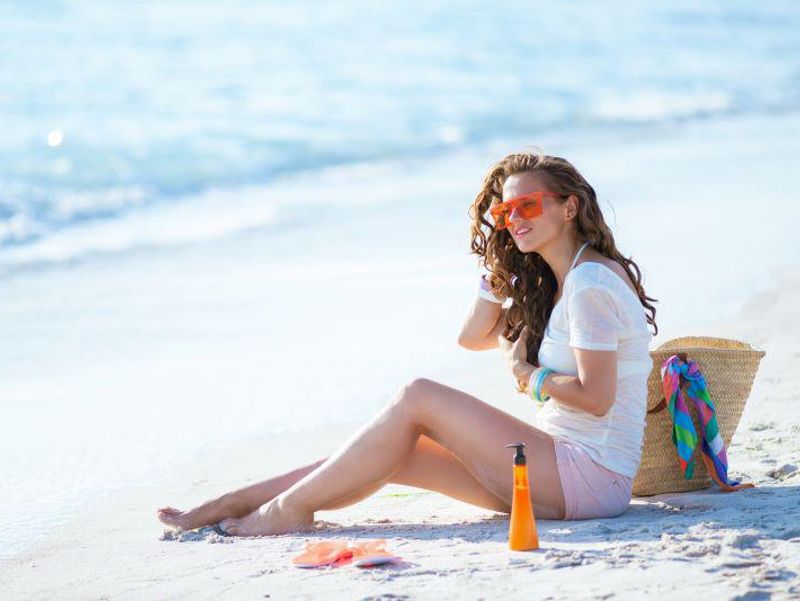
Lack of shade is a significant sunburn risk at the zoo, leading to potential health issues for visitors. Imagine the thrill of witnessing majestic animals up close, only to be sidelined by a painful sunburn. This article delves into the importance of sun safety at the zoo and offers practical strategies to stay cool and protected from the damaging effects of excessive sun exposure. This article will outline the dangers of sun exposure, suggest ways to mitigate risks at the zoo, discuss the importance of hydration, and advise on suitable clothing choices. It will also cover the signs and symptoms of heat-related illnesses and offer a roadmap for a safe and enjoyable visit. This guide breaks down the problem of shade deficiency at zoos, offering actionable solutions for a better visitor experience.
Understanding the Dangers of Sun Exposure
Sunburn and Its Consequences
Sunburn, often underestimated, can lead to severe consequences. The intense ultraviolet (UV) rays emitted by the sun can damage skin cells, outcomeing in redness, swelling, and pain. Prolonged sun exposure can contribute to long-term skin damage, increasing the risk of skin cancer. The prolonged heat can lead to dangerous heat-related illnesses, affecting the whole body, not just the skin. Prolonged exposure may lead to serious conditions like heatstroke and heat exhaustion. These conditions can lead to hospitalization and long-term health consequences.
The Importance of Shade at Zoos
Creating Safe Zones
Zoos play a critical function in protecting visitor health, especially during peak sun hours. Lack of adequate shade within a zoo environment can significantly boost the risk of sunburn. Strategically placed shade structures are crucial to providing relief from direct sunlight, creating safe zones where visitors can rest and stay protected.
Planning a Comfortable Visit
Visiting the zoo can be a physically and emotionally taxing activity, and especially in warm weather. Plan your visit around the hottest part of the day, aiming for cooler hours, when the sun’s rays are less intense. Using shade or cover is recommended to prevent exposure. Consider the length of time that you are going to spend outside and plan breaks accordingly. Check the zoo’s website or app for detailed information on shade availability and suitable timings for your visit. Knowing when the sun is strongest will help you plan your visit and ensure you maximize the time you spend at the zoo.
Mitigating Sunburn Risks with Protective Gear
Clothing Choices
Sunscreen is essential, but appropriate clothing also plays a crucial function in mitigating sun exposure. Lightweight, breathable clothing with a high UPF (Ultraviolet Protection Factor) rating will protect your skin from harmful UV radiation. Consider light, long-sleeved shirts and long pants for enhanced protection. Hats with wide brims, effectively shielding the face, neck, and ears, are also invaluable. This will help regulate your body temperature and keep you comfortable during the visit.
Sunscreen Application
Regular application of broad-spectrum sunscreen with a high SPF (Sun Protection Factor) is paramount. Reapply sunscreen every two hours, or more frequently if sweating or swimming. Sunscreen should be applied generously to all exposed skin areas, including the ears, neck, and back of the hands. This will help protect your skin from sun damage and prevent sunburn.
Staying Hydrated and Cool
The Crucial function of Hydration
Staying hydrated is essential to maintaining optimal health during prolonged outdoor activities. Dehydration can significantly exacerbate the effects of heat exposure. Carrying a water bottle and taking frequent sips throughout the day is crucial. Drinking plenty of water can help your body regulate its temperature and prevent heat-related illnesses.
Recognizing Signs of Heat-Related Illness
Being aware of the signs and symptoms of heat-related illnesses such as heat exhaustion and heatstroke is critical to ensuring safety. Signs include dizziness, headache, nausea, rapid pulse, and boostd body temperature. If you or someone you are with exhibits these symptoms, seek immediate medical attention. Keeping an eye on those who are susceptible is crucial to prevent serious health complications.
Creating a Plan for a achievementful Zoo Visit
Assessing Sun Exposure Risks
Understanding the daily sun cycle and weather forecast is critical to optimizing your zoo visit. determine the peak hours of the day when the sun’s rays are strongest. Planning your activities during these times can significantly reduce your risk of sun exposure. Choosing the right time of day is paramount in preventing heat stress and other risks. By anticipating the sun’s effects, you can take appropriate precautions and boost your chances of having a truly memorable experience.
Adapting to Outdoor Conditions
Adapting to outdoor conditions can be as simple as adjusting your schedule or seeking shade during peak hours. You can prepare accordingly for potential heat waves or other variations in weather. Being flexible about your activities will help you and your family to enjoy your time outdoors without succumbing to the risks of overheating or overexposure.
In conclusion, avoiding sunburn risks at the zoo requires proactive measures like seeking shade, wearing protective clothing, and using sunscreen. Staying cool and hydrated is equally crucial. By understanding the risks of lack of shade and implementing these strategies, visitors can enjoy their zoo experience without jeopardizing their well-being. For a truly safe and enjoyable day at the zoo, remember to plan ahead and prioritize sun safety. Stay sun-safe, stay cool, and have a fantastic time exploring the wonders of the animal kingdom!